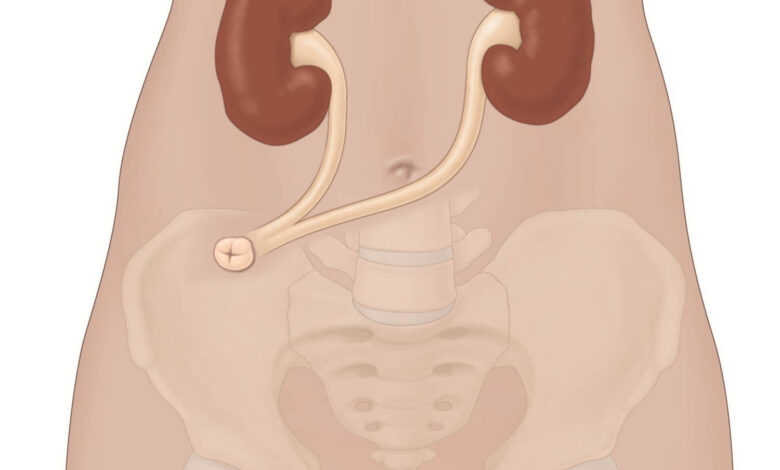Ureterostomy: A Comprehensive Guide to Understanding the Procedure

When it comes to medical conditions affecting the urinary system, various treatments and procedures have been developed to improve the quality of life for patients. One such procedure is urethrostomy, a surgical intervention that redirects urine flow from the kidneys to an external opening in the abdomen. In this article, we will delve into the details of ureterostomy, discussing its purpose, types, benefits, and considerations.
1. What is Ureterostomy?
Ureterostomy is a surgical procedure performed to reroute the flow of urine from the kidneys to an opening created on the abdominal wall. This is usually necessary when the normal urinary pathway is obstructed or damaged, making it difficult for urine to pass through the urethra and out of the body. Creating a new path for urine elimination can significantly improve a patient’s quality of life.
2. Types of Ureterostomy
Cutaneous Ureterostomy
Cutaneous is the simplest form of it. In this procedure, the surgeon directly attaches one or both ureters to the skin surface of the abdomen, forming a small opening called a stoma. The urine then drains continuously into a collecting bag attached to the stoma, allowing easy removal and management.
Ileal Conduit Ureterostomy
In an ileal conduit it, a segment of the small intestine (ileum) is used to create a passage for urine.Connects them to the isolated section of the ileum. The other end of the ileum is then brought out through the abdominal wall, forming a stoma. Urine flows through the stoma and into a pouch attached to the skin.
Colon Conduit Ureterostomy
Colon conduit it involves using a part of the colon to create the urine passage. Colon segment. Similar to ileal conduit it, the colon is brought out through the abdomen to create a stoma for urine drainage.
3. Indications for Ureterostomy
Ureterostomy is considered in various medical conditions, including:
- Severe urinary obstruction
- Irreparable bladder damage
- Bladder cancer
- Extensive pelvic trauma
The decision to undergo ureterostomy is carefully made by a urologist based on the patient’s medical history and overall health.
4. Preparing for Ureterostomy Surgery
Before undergoing ureterostomy, patients undergo a thorough consultations with different specialists. They are advised about the procedure, potential risks, and expected outcomes. Preoperative instructions, such as fasting and medication adjustments, are provided to ensure a smooth surgical experience.
5. The Ureterostomy Procedure
The ureterostomy procedure is performed under general anesthesia. The surgeon carefully disconnects the ureters from the bladder, determines the type of conduit (cutaneous, ileal, or colon), and creates the stoma on the abdominal wall. The stoma is positioned to allow for easy management and concealment under clothing.
6. Postoperative Care and Recovery
Following ureterostomy, patients are closely monitored during the initial recovery period. They receive guidance on stoma care, changing the pouch, and preventing infections. Pain management and support for emotional adjustment are also provided during this time.
7. Managing Complications
As with any surgical procedure, ureterostomy carries some risks. Proper stoma care and attention to any signs of infection are essential to avoid complications.
Stoma Complications
Stoma issues, such as skin irritation and blockage, can occur. Regular inspection and proper cleaning can help prevent and manage these complications.
Infection
Infections at the surgical site or in the urinary tract are possible after ureterostomy. Prompt medical attention is crucial to manage infections effectively.
Metabolic Issues
Some patients may experience metabolic imbalances due to changes in urine flow. Monitoring and dietary adjustments can help maintain proper electrolyte levels.
8. Lifestyle Modifications
After ureterostomy, individuals can lead active lives, but some modifications may be necessary. Balanced diet can help improve overall well-being.
9. Psychological Considerations
Adjusting to life with can be challenging emotionally. Support groups and counseling can offer valuable assistance in coping with the changes and overcoming potential anxieties.
10. Future Advances in Ureterostomy
The field of urology continues to evolve, and ongoing research may lead to advancements in techniques, making the procedure even more efficient and patient-friendly. Read more…
Conclusion
Ureterostomy is a vital surgical procedure that offers relief and improved quality of life to individuals facing urinary system challenges. The different types of allow for tailored solutions based on individual needs. Patients can experience positive outcomes and enjoy an active, fulfilling life with appropriate preoperative preparation and postoperative care.
FAQs
FAQ 1: What is the difference between a cutaneous and ileal conduit ureterostomy?
A cutaneous ureterostomy involves directly attaching the ureters to the skin surface, while an ileal conduit uses a segment of the small intestine to create a passage for urine.
FAQ 2: How long does it take to recover from ureterostomies surgery?
The recovery period varies for each patient, but it generally takes several weeks to resume normal activities fully.
FAQ 3: Can I resume normal activities after the procedure?
Yes, with appropriate care, most patients can resume their regular activities after ureterostomies surgery.
FAQ 4: Are there any dietary restrictions after ureterostomies surgery?
Dietary recommendations may vary, but patients are generally advised to stay hydrated and maintain a balanced diet.
FAQ 5: What are the success rates of ureterostomies?
The success rates of ureterostomies are high, with many patients experiencing significant improvement in their urinary health and quality of life.




